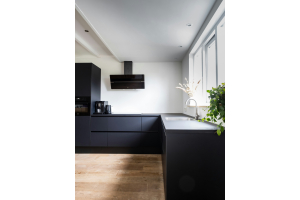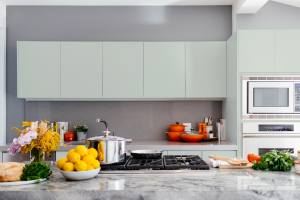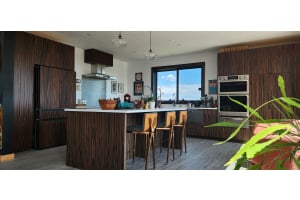Transform your space with an eye-catching wall treatment that you can do yourself! You can make fluted wall panels by preparing the panels, installing them, and applying primer and paint.
In this guide, we’ll go over how to make fluted paneling like a professional. You'll find out what you need and how to bring it together for a beautiful wall feature. Whether you're a DIY enthusiast or new to home projects, you'll learn building techniques and how to fix fluted wall panels.
Materials to Make Fluted Panels
What is a fluted panel made out of? We have you covered–here is a list of the main materials you'll need to bring your vision to stunning reality:
- Wood: There are a few different options for the paneling, but we recommend medium-density fiberboard (MDF). It has a smooth surface and is easy to cut. Other options include half-round molding or fluted trim.
- Nails: You'll also need a brad nailer to secure your panels to the wall. This light-duty tool will simplify the installation process.
- Saw: You'll need a saw to trim the wood to fit your wall.
- Level: Using a level will ensure uniform results.
- Finishing materials: Sandpaper will help you achieve a smooth and polished finish.
- Primer and paint or stain: Select a quality primer and paint‒or stain‒depending on how you want the finished product to look. Think about how much you want the wall to pop and how it will complement the room's overall design.
Assembling and Installing the Fluted Panels
With your materials and tools ready, it's time to start building. Here is a step-by-step guide to creating your fluted wall feature:
Prepare the Panels
Carefully measure the wall and cut the wood you're using for the panels. Ensure each piece looks uniform, and be sure to sand and stain the wood before installing.
Installing
Begin with your first piece on the edge of the wall, making sure it is level before you put any nails in. Press the strip into the wall and begin nailing it in place. Once you are done with the first piece, use a spacer to ensure all the wood is of equal distance apart. Nail the rest of your pieces in until the wall is complete.
Applying Primer and Paint
Once your wall is built, it's time for primer and paint. Use a paint sprayer to get a quick, even coat. Wait until the primer is dry to apply your paint color. You'll also want to allow ample drying time between coats if you do more than one.
Installation Tips
Issues always come up in any DIY project. Don’t worry–there are various ways to fix a fluted wall if you make a mistake. To avoid any mishaps, consider adding these installation tips:
-
Prepare the wall surface: Start with a clean surface by wiping down the wall and allowing it to dry. Make any necessary repairs to the wall to achieve the best results.
-
Proper mounting and securing: Select high-quality mounting hardware, like the brad nails or screws. Using something like wood glue may not keep the paneling secure to the wall.
-
Use a level: Make sure each piece is level as you install them. While this step may seem meticulous, it ensures professional-looking results.
If you mess up a piece, don’t keep going‒just remove it from the wall and start again. You may need to switch up your technique or remeasure.
The Bottom Line
By following this guide, you'll have your new fluted wall in no time. The custom-made feature will become a beloved design element in your space. If you're not into DIY but still want the look, 27estore has fantastic premade fluted wall panels that are ready for installation in your home!





